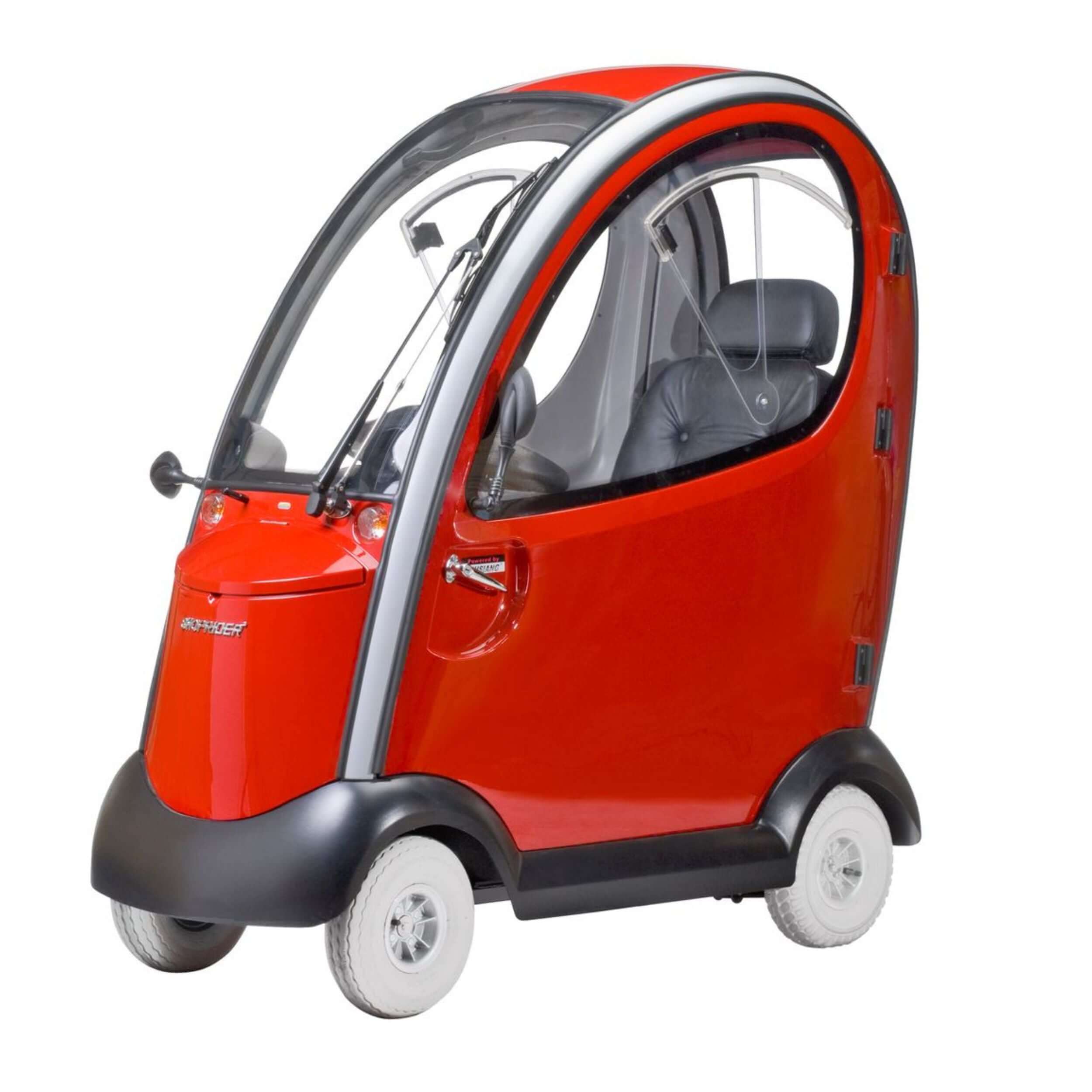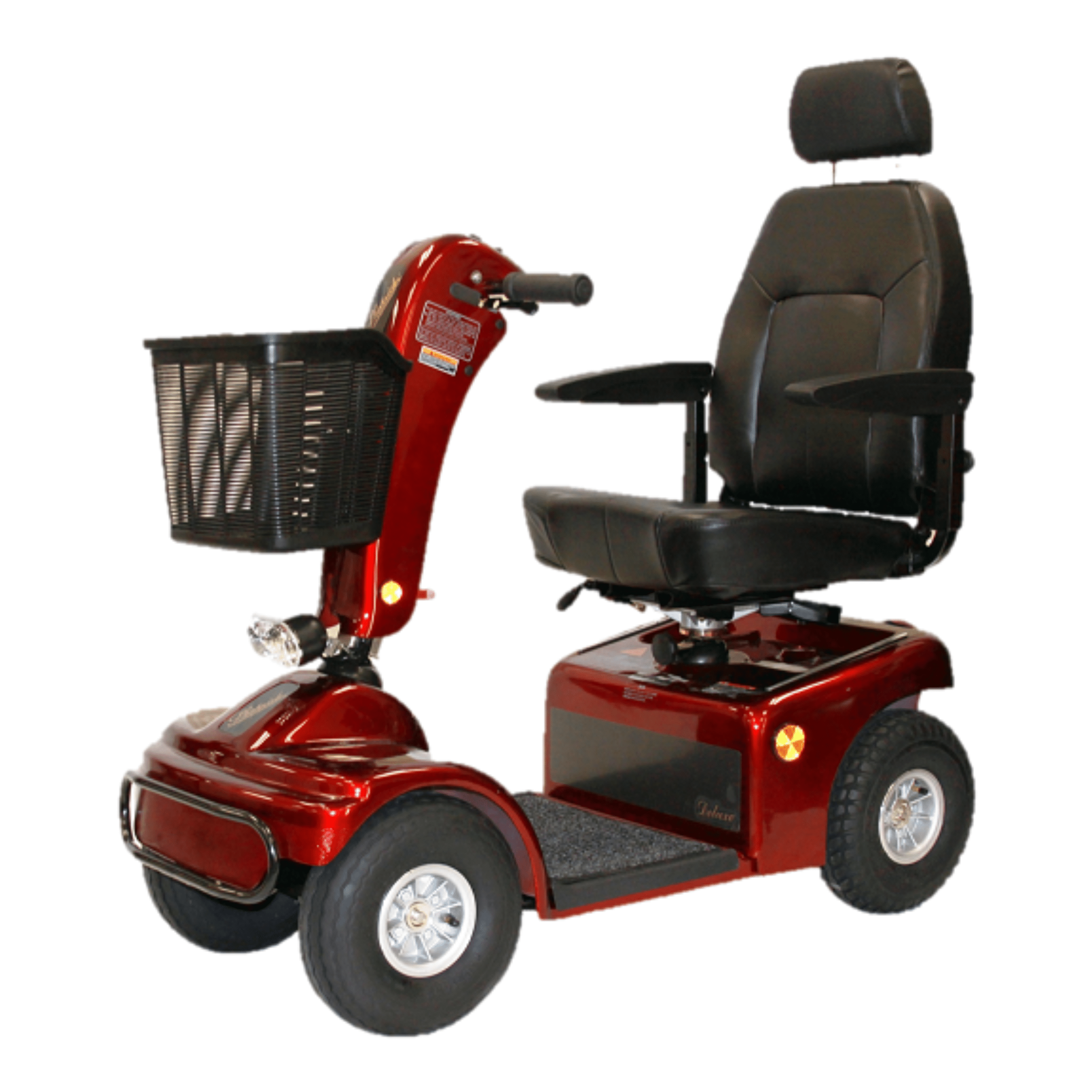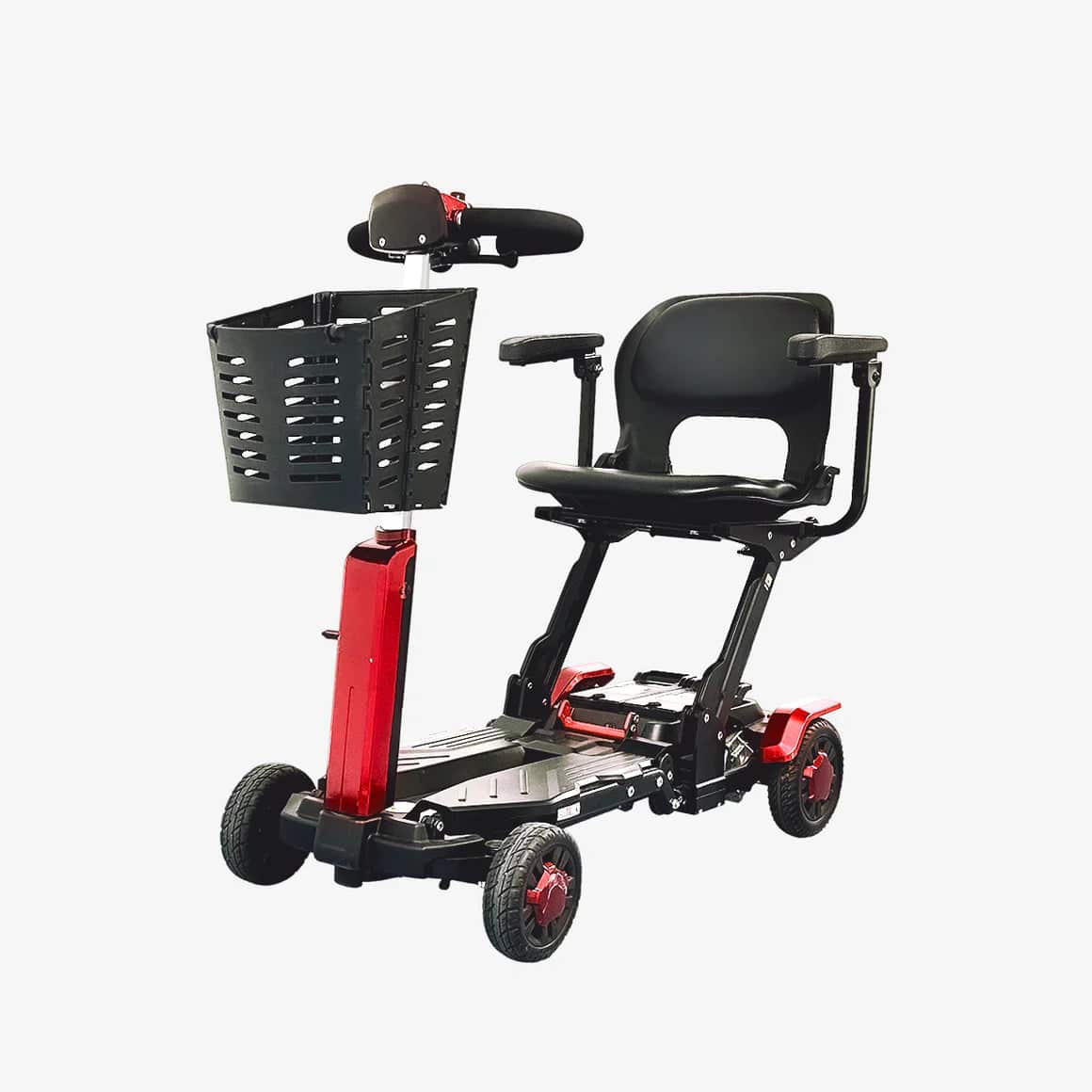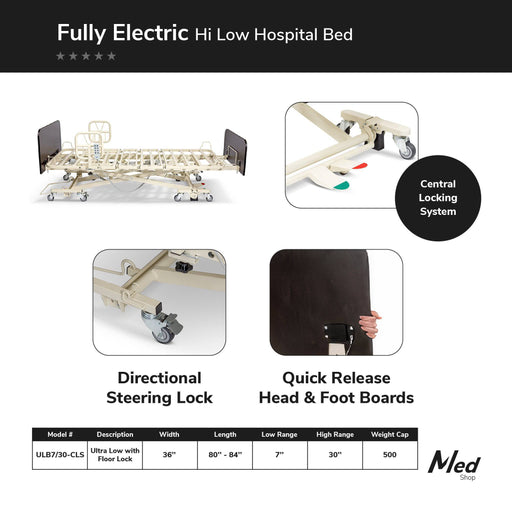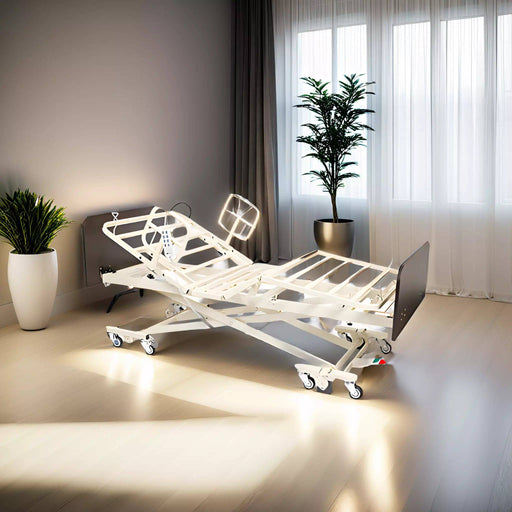
Mobility Scooter vs Electric Wheelchair: Key Differences and Benefits
Key Takeaways:
- Mobility scooters and electric wheelchairs serve different needs based on physical abilities and usage environments
- Scooters require more upper body strength and stability but offer greater outdoor range and speed
- Electric wheelchairs provide superior maneuverability for tight indoor spaces and accommodate more severe mobility limitations
- Scooters typically feature tiller steering while electric wheelchairs use joystick controls
- Premium models like Shoprider scooters offer all-weather protection and extended range
- The right choice depends on your specific mobility needs, physical capabilities, and typical usage environment
When comparing mobility scooter vs electric wheelchair options, understanding the fundamental differences and benefits of each can significantly impact your independence, comfort, and quality of life. Both mobility solutions offer distinct advantages that may better suit your specific physical capabilities, lifestyle needs, and usage environments.
Understanding Mobility Scooters and Electric Wheelchairs
The mobility scooter vs electric wheelchair decision involves evaluating substantial differences in design, operation, and intended use. Understanding these differences is crucial for determining which mobility solution will provide the greatest freedom and functionality for your particular circumstances.
For a broader comparison of all mobility options, our guide on mobility scooter vs wheelchair provides additional insights into both manual and electric wheelchair alternatives.
At MedShopDirect, we offer premium Shoprider mobility scooters and Vocic mobility scooters designed to maximize independence and mobility for users with varying needs. Let's examine the key differences between these mobility solutions to help you make an informed decision.
Mobility Scooter vs Electric Wheelchair: Essential Differences
The design, operation, and user requirements differ significantly between these two mobility options:
Design and Control Differences
| Feature | Mobility Scooters | Electric Wheelchairs |
|---|---|---|
| Control Mechanism | Tiller steering (handlebars) | Joystick control |
| Seating Position | Forward-facing with swivel capability | Forward-facing in fixed configuration |
| Entry/Exit | Step-through design or swivel seat | Side or front transfer |
| Wheel Configuration | Typically 3 or 4 wheels | Typically 4 or 6 wheels |
| Turning Radius | Larger (especially 4-wheel models) | Tighter, more maneuverable |
| Base Footprint | Usually larger | Often more compact |
| Battery Position | Often under seat | Typically within base |
| Appearance | Vehicle-like design | Medical equipment appearance |
User Capability Requirements
The physical abilities required for each option vary substantially:
Mobility Scooters Require:
- Sufficient upper body strength for steering
- Ability to operate handlebar controls
- Core stability to maintain upright seated position
- Ability to transfer on/off the scooter seat
- Some walking ability (in most cases)
Electric Wheelchairs Accommodate:
- Limited upper body strength
- Minimal hand dexterity for joystick control
- Positioning support for those who cannot sit upright independently
- Various transfer methods including assisted transfers
- Complete mobility limitations
These physical requirements often become the deciding factor in the mobility scooter vs electric wheelchair decision.
Premium Mobility Scooter Options
For those with sufficient physical capabilities for scooter operation, these outstanding models provide exceptional mobility solutions:
For those specifically interested in lightweight travel options, our guide to the best lightweight mobility scooter for easy travel and daily use provides additional recommendations.
Mobility Scooter Benefits and Advantages
In the mobility scooter vs electric wheelchair comparison, scooters offer several distinct advantages:
1. Enhanced Outdoor Performance
Mobility scooters excel in outdoor environments:
- Larger Wheels: Better handling of uneven terrain and obstacles
- Extended Range: Typically 15-30 miles per charge on premium models
- Higher Speed: Usually 4-5 MPH compared to 3-4 MPH for many electric wheelchairs
- Weather Protection: Models like the Shoprider Flagship Cabin offer enclosed protection
- Suspension Systems: Many models feature enhanced suspension for rough terrain
The Shoprider Sprinter XL4 exemplifies these outdoor advantages with its robust design and extended range capabilities.
2. Independence for Those with Partial Mobility
Scooters provide optimal solutions for users with some mobility:
- Step-Through Design: Easier access for those who can stand briefly
- Swivel Seats: Facilitate transfers for those with limited mobility
- Familiar Control System: Handlebar steering is intuitive for many users
- Simplified Operation: Basic controls with minimal complexity
- Multi-Purpose Use: Suitable for both shopping and recreational outings
These features make scooters ideal for users who maintain some walking ability and upper body strength.
3. Psychological and Social Benefits
The appearance and perception of scooters offer additional advantages:
- Less Medical Appearance: Looks more like a recreational vehicle
- Societal Perception: Often viewed as a lifestyle choice rather than medical necessity
- User Confidence: Many users report greater comfort in public settings
- Community Integration: Facilitates participation in group activities and outings
- Customization Options: Many accessories for personalization
For many users, these social and psychological benefits significantly impact quality of life.
4. Travel and Transport Advantages
Many mobility scooters offer superior portability:
- Disassembly Capability: Many models separate into manageable components
- Folding Designs: Models like the Vocic D91 fold as a single compact unit
- Vehicle Compatibility: Many fit in standard vehicle trunks
- Travel-Friendly: Some models are approved for air travel with proper documentation
- Storage Efficiency: More compact when not in use
These features make scooters preferable for active users who travel frequently.
Electric Wheelchair Benefits and Advantages
In the mobility scooter vs electric wheelchair comparison, electric wheelchairs offer these key advantages:
1. Superior Indoor Maneuverability
Electric wheelchairs navigate indoor environments more effectively:
- Tighter Turning Radius: Typically 20-26 inches compared to 35-55 inches for scooters
- Centered Wheel Drive: Options for mid-wheel drive with pivot turning
- Compact Base: Narrower profile for doorways and hallways
- Under-Table Access: Lower-profile design rolls under tables and desks
- Precision Control: Joystick offers fine-tuned movement in tight spaces
These features make electric wheelchairs superior for primarily indoor use.
2. Accommodation of Severe Disabilities
Electric wheelchairs better serve those with significant physical limitations:
- Minimal Strength Requirements: Joystick control requires minimal force
- Alternative Controls: Head arrays, sip-and-puff, and other specialized interfaces
- Positioning Systems: Tilt, recline, and elevation functions
- Medical Accessory Mounts: Supports for ventilators, oxygen, feeding tubes
- Custom Support: Specialized seating for those with postural challenges
Users with progressive conditions often find electric wheelchairs more adaptable to changing needs.
3. One-Handed Operation
Joystick control provides advantages for certain users:
- Single-Point Control: All functions managed through one interface
- Variable Speed Precision: Fine-tuned speed control with minimal movement
- Programmable Sensitivity: Customizable response to accommodate physical limitations
- Direction Changes: Quick direction adjustments without repositioning hands
- Simpler Operation: Less coordination required than tiller steering
These control benefits are particularly valuable for users with limited upper body strength or coordination.
Additional Exceptional Mobility Scooter Options
Beyond our top three recommendations, these models address specific mobility needs:

Shoprider Enduro XL4 Mobility Electric Scooter
The Shoprider Enduro XL4 offers an exceptional balance of performance and versatility. This well-engineered mobility scooter delivers reliable operation with substantial battery range and comfortable features for extended use across various environments.
Key Features
- Four-Wheel Stability: Enhanced stability for various terrain conditions
- Extended Range: Superior battery life for longer outings
- Comfortable Captain's Seat: Premium seating for extended comfort
- Enhanced Suspension: Smoother ride over uneven surfaces
- Reliable Performance: Trusted Shoprider engineering and durability
Perfect For
- Users who need a versatile mobility solution for various environments
- Those who travel moderate distances regularly
- People who value comfort for extended use periods
- Situations requiring reliable daily transportation

Shoprider Dasher 4 Wheel Electric Mobility Scooter
The Shoprider Dasher combines lightweight portability with the trusted Shoprider engineering legacy. This compact four-wheel scooter offers easy transport and storage while providing excellent stability and comfort for daily use in multiple environments.
Key Features
- Portable Four-Wheel Design: Stable platform with convenient disassembly
- Quick-Disconnect System: Easily separates into lightweight components
- Adjustable Tiller: Customizable driving position for different user heights
- Flat-Free Tires: Maintenance-free wheels eliminate puncture concerns
- Long Battery Life: Extended range for daily activities without frequent charging
Perfect For
- Users seeking lightweight convenience with Shoprider reliability
- Those who need a balance of indoor and outdoor functionality
- Individuals who transport their scooter frequently in a vehicle
- Users looking for a well-established brand with proven support
Key Deciding Factors: Mobility Scooter vs Electric Wheelchair
When determining which mobility solution is right for you, consider these critical factors:
1. Physical Abilities and Limitations
Your physical capabilities should guide your decision:
- Upper Body Strength: Limited strength favors electric wheelchairs
- Core Stability: Poor trunk control suggests electric wheelchair with positioning
- Hand Dexterity: Limited fine motor control may favor joystick over tiller
- Transfer Ability: Standing ability may make scooters more accessible
- Endurance: Consider how long you can comfortably maintain seated position
An honest assessment of these capabilities helps narrow your options to those that will provide the greatest independence.
2. Primary Usage Environment
Where you'll use your mobility device most often matters significantly:
- Primarily Indoor: Tight spaces favor electric wheelchairs
- Primarily Outdoor: Open areas and distance favor scooters like the Shoprider Sprinter XL4
- Mixed Environments: Consider which setting represents 70%+ of usage
- Specific Challenging Areas: Identify any problem areas in frequent locations
- Weather Conditions: Consider models like the Shoprider Flagship Cabin for inclement weather
Like choosing electric hospital beds based on home environment, matching your mobility device to your typical settings ensures maximum functionality.
3. Transportation and Storage Requirements
How you'll transport and store the device impacts practicality:
- Vehicle Type: Consider trunk dimensions and lifting requirements
- Home Storage Space: Evaluate available storage at home and destinations
- Lifting Capability: Assess the ability to manage components during transport
- Frequency of Transport: More frequent transport favors portable options
- Ramp or Lift Requirements: Electric wheelchairs often require vehicle modifications
Lightweight scooters like the Vocic D91 offer significant advantages for those who transport frequently.
Performance Comparison: Mobility Scooter vs Electric Wheelchair
Understanding performance differences helps match capabilities to your needs:
Speed and Range Comparison
| Feature | Typical Mobility Scooters | Typical Electric Wheelchairs |
|---|---|---|
| Maximum Speed | 4-8 MPH | 3-5 MPH |
| Average Range | 10-30 miles | 8-20 miles |
| Battery Size | Often larger capacity | Varies by model |
| Charging Time | 8-12 hours | 8-12 hours |
| Power Efficiency | Generally more efficient outdoors | Generally more efficient indoors |
Premium models like the Shoprider Sprinter XL4 often exceed these typical specifications.
Terrain Handling Comparison
Different terrain types favor different mobility solutions:
- Smooth Indoor Surfaces: Both perform well, wheelchairs have edge in tight spaces
- Outdoor Sidewalks: Both perform well on smooth, paved surfaces
- Uneven Terrain: Scooters generally handle better with larger wheels
- Gravel or Grass: Larger scooters typically provide better performance
- Inclines: Performance varies by specific model power
- Thresholds and Small Steps: Varies by ground clearance specifications
The best choice depends on the specific environments you navigate most frequently.
Insurance and Funding Considerations
Financial considerations often influence the final decision:
Medicare Coverage Differences
Understanding coverage criteria helps navigate the funding process:
- Documentation Requirements: Medical necessity must be established
- In-Home Assessment: Focus on mobility within the home
- Prior Authorization: Often required before purchase
- Supplemental Coverage: May cover what Medicare doesn't
- Rental Options: Sometimes available before purchase
These factors can significantly impact out-of-pocket expenses.
Alternative Funding Resources
When insurance coverage is limited, consider these options:
- Veterans Benefits: Special programs for qualifying veterans
- State Assistance Programs: Medicaid and state-specific resources
- Nonprofit Organizations: Condition-specific foundations and grants
- Equipment Loan Programs: Community-based lending programs
- Certified Refurbished Equipment: Quality rebuilt units at reduced costs
These alternatives may help access your preferred mobility solution despite funding constraints.
Maintenance and Longevity
Long-term ownership considerations differ between options:
Typical Maintenance Requirements
Regular care ensures reliability and performance:
- Battery Care: Both require regular charging and battery maintenance
- Tire Maintenance: Scooters often have pneumatic tires requiring air pressure checks
- Moving Parts: Scooters typically have more mechanical components
- Electronic Systems: Both require protection from moisture and impact
- Cleaning Requirements: Similar for both with attention to electrical components
Like the importance of properly cleaning hospital beds, regular mobility device maintenance ensures optimal performance and longevity.
Expected Lifespan Comparison
Quality and usage patterns affect longevity:
- Frame Durability: Both can last 5-10+ years with proper care
- Battery Replacement: Typically every 1.5-3 years depending on usage
- Electronics Lifespan: Similar for both with proper care
- Resale Value: Premium brands like Shoprider typically maintain better value
- Upgrade Pathways: Consider future adaptability as needs change
Investment in quality initially often reduces long-term ownership costs.
Accessories and Customization
Both mobility solutions offer enhancement options:
Common Mobility Scooter Accessories
Useful additions for scooters include:
- Storage Options: Front baskets, under-seat storage, and rear bags
- Comfort Enhancements: Upgraded seating, armrest pads, and suspension
- Weather Protection: Canopies, covers, and enclosed cabins
- Safety Features: Additional lighting, mirrors, and flags
- Convenience Items: Cup holders, phone mounts, and cane holders
These accessories can significantly enhance the user experience.
Electric Wheelchair Add-Ons
Common wheelchair enhancements include:
- Seating Systems: Cushions, backrests, and positioning components
- Control Alternatives: Various control interfaces for different abilities
- Mounting Systems: For communication devices, ventilators, and other equipment
- Lighting Packages: Enhanced visibility for safety
- Specialty Controls: Environmental control units and smart device integration
These additions often focus on medical needs and specialized functions.
Transitioning Between Mobility Solutions
Many users find their needs change over time:
Progressive Adaptation Strategies
Planning for changing mobility needs ensures continued independence:
- Reassessment Timing: Schedule regular evaluations of mobility needs
- Rental Before Purchase: Test options before significant investment
- Flexible Funding Planning: Anticipate future equipment needs
- Maintaining Multiple Options: Some users benefit from both devices
- Resale Considerations: Quality brands maintain better value for upgrades
Just as patients may transition from standard beds to luxury hospital beds for home as needs change, mobility solutions often evolve with changing physical conditions.
Conclusion: Making Your Choice
In the mobility scooter vs electric wheelchair comparison, the best choice depends entirely on your unique combination of physical capabilities, usage environment, and lifestyle preferences. For users with good upper body strength and stability who primarily travel outdoors, mobility scooters like the Shoprider Flagship Cabin or Shoprider Sprinter XL4 offer advantages in range, speed, and outdoor capability. For those with more significant physical limitations or who primarily navigate indoor environments, electric wheelchairs typically provide better maneuverability and accommodation of severe disabilities.
The most effective approach involves thorough assessment of your needs, consultation with healthcare professionals, and when possible, testing both options in your typical usage environments. Many users find that trying various models in real-world situations provides the clearest indication of which solution will offer the greatest independence and quality of life.
When selecting a mobility scooter, trusted brands like Shoprider and Vocic offer exceptional options ranging from portable travel models to robust outdoor designs. Premium features like all-weather protection, extended range, and easy transport capabilities make these brands stand out for users seeking maximum independence and mobility.
For personalized guidance on selecting between mobility scooters and electric wheelchairs, contact our mobility specialists who can provide detailed recommendations based on your specific requirements and help you find the perfect solution for your unique mobility needs.
Just as hospital bed mattresses must be carefully matched to patient needs, your mobility solution should be precisely tailored to your physical capabilities, environment, and lifestyle to maximize independence and quality of life.
